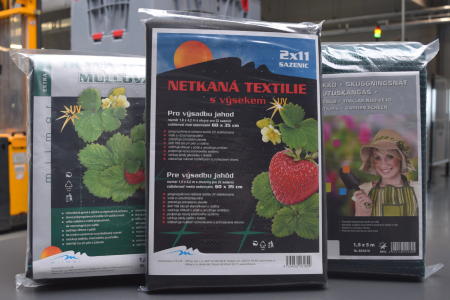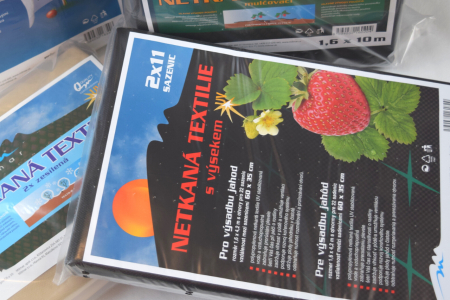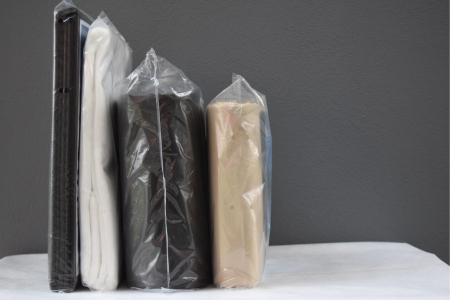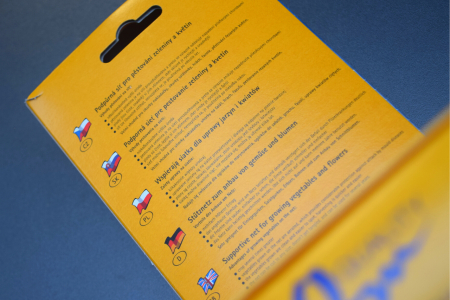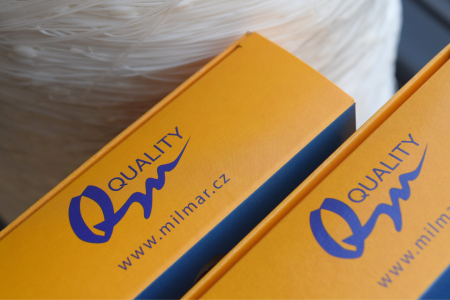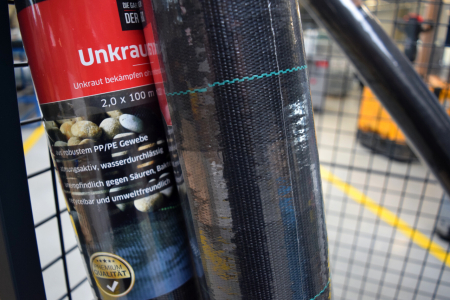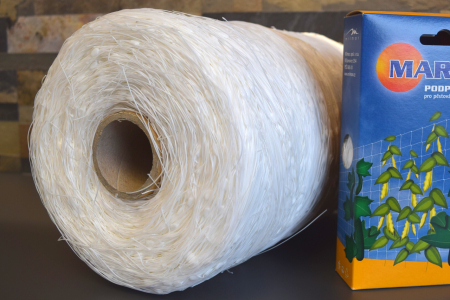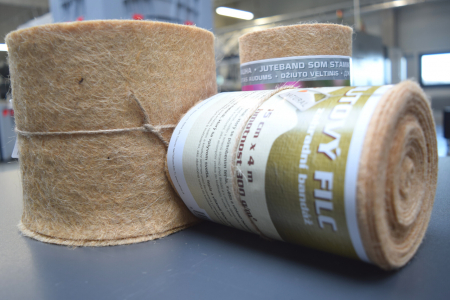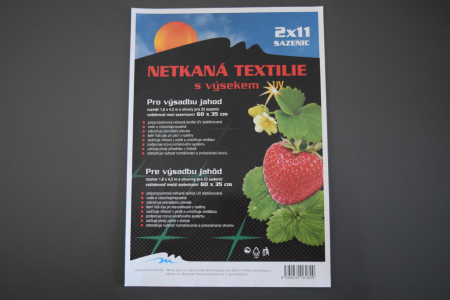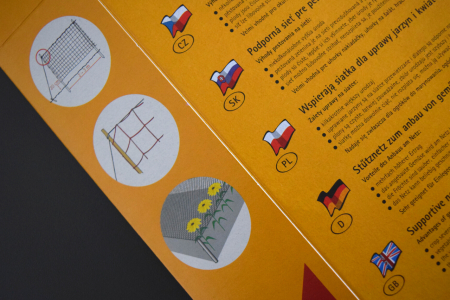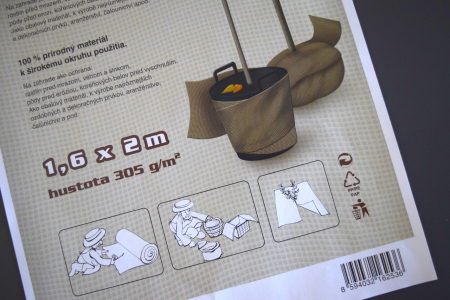
Choose from various packaging alternatives. In this article, we introduce different types and share our advice on labelling.
1. Foil Packaging
Foil is mostly used for packing nonwovens for gardening purposes, or for packing jute decorations. We always discuss the required package dimensions with our client before starting our production process. We make it a priority to customise individual packaging to fit your store or storage shelving system perfectly, so that you use your shelves effectively.
Foil packages are labelled with an inserted paper label or with a sticker label. The former is the best deal cost-wise.
2. Hanger Solutions
Instead of shelves, some stores use hanging solution systems — metal constructions on which individual packages are hung.
Production of hanging packaging entails attaching a plastic hanger to the bottom of the bag, placing the nonwoven product inside and sealing the opposite side of the bag.
3. Netting Packaging
Plastic netting is the perfect packaging material for protective bird nettings and other products.
4. Cardboard Box
Cardboard boxes are a popular packaging solution. You just need to tell us your expectation and we’ll take care of the entire manufacturing process — resulting in made-to-measure packaging according to your standards.
5. Rolls in Foil
Some customers prefer their products packed in rolls. We manufacture rolls in the dimensions you require, wrap them in heat-shrinkable foil, and add your label.
6. Tied-Up Roll
Some rolls may not even need foil wrapping. A jute roll is just fine with a paper label wrapped around it, secured with a cord.
Obligatory Label Information
Make sure you pay sufficient attention to the label. You need to comply with the labelling standards of the destination country (the state in which you intend to sell your goods). In Europe, legal provisions for labels are laid out in Regulation (EU) 1007/2011.
A label must contain the following:
- the manufacturer/producer/distributor,
- product name,
- important parameters (dimensions, weight, colour),
- material composition,
- instructions of use,
- possible hazards or dangers that could be caused by misusing the product.
Some information can be communicated in pictograms if these are widely known. Be careful though — the use of some pictograms is strictly regulated and controlled (e.g. recycling symbols).
If you are planning to sell your product in multiple countries, there are two ways to approach it. Multilingual labels or separate labels for each country in its respective language. Always check legal label requirements for each country.
Typically, a label would be branded with your logo and a product barcode.
The last thing you need to check when designing your label is waste management regulations. In some countries, you need to identify the packaging material (for recycling purposes). Use standardised numerical and alphabetical symbols according to EU regulations.
Send Us Your Graphics. We'll Print the Labels.
Most of our clients have their graphic designer who designs the entire label according to their brand book. In such a case, the label we produce is branded just with the client’s logo — the Milmar brand is absent.
Right after you supply us with the graphic files, we take care of the production, and insert labels into the packaging.
Add New Products to Your Portfolio
We are happy to enrich your product portfolio with our nonwoven products and plastic mesh. We produce made-to-measure goods that meet your requirements, and package them according to your standards. Read about the six steps to a successful business partnership.


